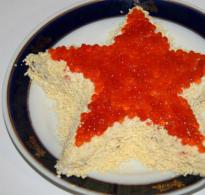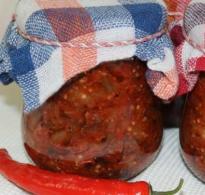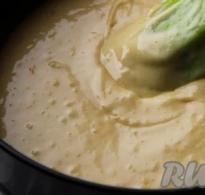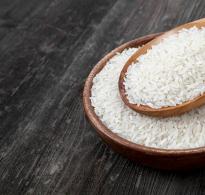Where is the best place to store ripe bananas? How to store bananas at home
Recently I had a question - how and where to store bananas so that they remain fresh and tasty. I found the answers. I’ll try to help you figure out how to store bananas correctly.
How to keep bananas fresh?
Bananas are a perishable product. But, despite the fact that their price can be very attractive, it is not advisable to buy them for future use. However, even several purchased fruits must be stored correctly to prevent darkening and spoilage.
Rule 1. Optimal storage conditions
- These fruits will be best stored at a temperature of +13 ... +14 ° C. At the same time, sudden changes in temperature should be avoided.
- Ideal air humidity for storing bananas - 85-90%. If you have a basement or cellar, store them there.
- Air circulation. It is better to keep these fruits in a well-ventilated area.
- Whole bunches last longer, if you wrap the leg in tape or polyethylene.
 How to preserve bananas without turning black? It’s very simple - wrap their legs with stationery tape
How to preserve bananas without turning black? It’s very simple - wrap their legs with stationery tape Bananas should not be stored in a plastic bag - it retains moisture and can cause the fruit to rot.
Rule 2. Degree of maturity
You, of course, have noticed that you can buy bananas of different colors in the store. And this indicator must be taken into account during storage:
- Greens- unripe fruits. Their clusters are quite dense and difficult to separate. The pulp of the green fruits is not very sweet and has a slight grassy taste. These are the bananas that last as long as possible and ripen during the process.

- Yellow– ripe fruits, completely ready to eat. They have a pleasant aroma, taste and consistency.

- Darkened with black spots- overripe fruits that can be eaten.

Rule 3. Features of storing yellow fruits in peels
Can bananas be stored in the refrigerator?? A logical question, but not everything is so simple. Fruits of varying degrees of maturity require special conditions and shelf life.
Simple instructions will help you understand all the intricacies and act correctly.
| Image | Storage Features |

|
Storing green fruits:
|
 |
Storing yellow fruits:
|
 |
Storing overripe fruits:
|
Rule 4. Features of storing peeled bananas

In some cases, you can store peeled bananas in the refrigerator.
| Image | Storage method |
 |
|
 |
|
What should you pay attention to?
- Bananas do not tolerate direct exposure sources of artificial heat or sunlight. They don’t ripen, but immediately spoil.
- If overripe fruit has gray spots or traces of mold - this indicates violations of storage or transportation rules. You should not buy such fruits - it can be dangerous to health.
- If you often purchase ripe bananas , consider purchasing a special stand to store them.

Bananas – favorite treat fruit flies. If you have these at home, it is better to keep the fruit in a closed paper bag or in the refrigerator.
Resume
Now you know that whether to store bananas in the refrigerator or not depends mainly on their degree of ripeness, as well as the purpose and shelf life. The useful video in this article will help you understand all the details more clearly. And if you have any questions, ask them in the comments, and we’ll figure it out together.
Bananas have long ceased to be exotic for residents of Russia. These fruits come from Southeast Asia. They are quite healthy when consumed within reasonable limits, contain many nutritional elements and are readily available in supermarkets. But let's clarify some questions.
This fruit most valuable source vitamins containing large number carbohydrates. Thanks to this, they are suitable for nutrition for athletes and simply training people. Meaningful and important question– how to store bananas? Until ripeness, the fruits are best stored at room temperature, after which they can be placed in the refrigerator for storage for no more than a week. In general, it is better not to store these ripe fruits, but to eat them immediately, since this miracle of nature is perishable product. And the taste of ripe fruit is not conducive to long-term storage. I want to eat it right away. Store perhaps only when ripe and for culinary use frozen.
How to choose bananas
So how to choose bananas? There is one rule, if ripe fruit If you see black dots, then this is the “correct” fruit, not processed. You should refrain from buying green and unripe ones, they are clearly not ripe, solid starch without sugars, taste like grass. Obviously spoiled by rot is also not an option. Completely yellow (first grade) are not very good in terms of flavor and have virtually no odor. Best taste have fruits with a slightly spotted color, such specimens are classified as second grade, and the aroma will be more pleasant. If the fruit has not been subjected to chemical or gas treatment and does not have dark spots, then it is unripe. You should absolutely not take bananas that have mold on them. This means that storage rules or transportation rules have been violated.
Banana storage standards
The shelf life of ripe bananas is not long. The average comfortable temperature for a person allows them to be stored for no more than five days. When storing the fruit in question in the freezer, the permissible period is no more than three months.
How to store green bananas so they ripen

It is not always possible to find fruits with normal maturity in provincial small towns. Sometimes you have to buy green, unripe ones. And here the question arises: how to store green bananas so that they ripen?
Despite the fact that unripe specimens have the same benefits as ripe ones, there is nothing to say about the taste; they need to be ripe. Since banana is a climate fruit, it continues to ripen even after being picked. Optimal temperature should not exceed 16 degrees, ripening time is about five days. At temperatures below 10 degrees, this fruit will no longer ripen. If it is not possible to create such conditions, then a bunch of bananas can be stored at room temperature in a suspended state (there are even special stands for storage), preferably in the absence of sunlight. But in this case the taste will differ for the worse compared to the first option.
Why do bananas turn black?

Let's look at the question of why bananas turn black. There are several answers to this question.
- The presence of blackheads indicates maturity.
- Bananas begin to turn black at low storage temperatures.
- After picking, the ETR1 and CTR1 genes are blocked, this leads to the release of ethylene, which leads to the production of enzymes: pectinase (destruction of cellular structure), amylase (starch is converted into sugar), hydrolase (reduces the amount of chlorophyll, a color change occurs). The banana begins to deteriorate and loses its attractive appearance.
How to store bananas so they don't turn black
We have figured out the reasons for the blackening of the fruit, now let’s look at the question of what to do to prevent the fruit from turning black. When exposed to a heat source, spoilage will occur rather than the ripening process. Improper storage of bananas leads to both blackness and spoilage at the same time. Completely blackened fruits are no longer suitable for consumption.
Where is the best place to store it?
To avoid blackening, use the tips below:
- do not store fruits in packaging in the refrigerator, as this will significantly reduce the shelf life and they will simply spoil;
- bananas will not ripen in the refrigerator;
- temperature changes contribute to blackening;
- ripe fruit It is extremely undesirable to store for a long time;
- Do not place ripe fruits in the refrigerator - the peel begins to become stained;
- lemon juice will help keep the cut slices or slices fresh for no more than a day;
- It is advisable to store ripe fruits not in a bunch, but separately;
- joint storage ripe bananas and unripe apples reduces the likelihood of blackening
Storage temperature
The optimal storage temperature for the hero of our article is considered to be in the range of 14-16 degrees. In this case, blackening will not occur at such a rapid pace. Suitable humidity for storage is 85-90 percent. Direct sunlight is not allowed. According to this indicator, a cellar or basement is better. It is highly desirable that the premises have air circulation and sufficient ventilation. Providing these conditions will allow these tropical fruits to maintain their freshness, appearance and taste. If you want to achieve faster ripening, then the fruit bunch should be stored close to ripe apples. Sprinkling with lemon or pineapple juice acceptable when storing sliced slices or pieces for about two hours, for example, when cooking fruit salad or while you are waiting for guests.
Can bananas be stored in the refrigerator?
When asked whether it can be stored in the refrigerator, the answers are contradictory. The answer can be positive in case of short-term storage, a day or two, no more. In addition, it is highly advisable to store these tropical fruits in a special compartment (the so-called zero chamber), where the average temperature is about zero degrees. In addition, it is absolutely not recommended to store already peeled and sliced fruit; during the oxidation process, blackening of the pulp will occur quickly. The blackened pulp is no longer suitable for food.
It is believed that the temperature of the refrigerator is not suitable for storing bananas. One tip for refrigerated storage is to wrap it in paper to prevent contact. But what if the fruit, placed in the refrigerator, does not darken? Most likely, you will wonder what the fruits were processed with and in what quantities?
How to store bananas in the freezer
Can bananas be stored in the freezer? Yes, this is quite acceptable, although they all year round sold in supermarkets. There are several methods. The simplest is to wrap the fruit without removing the peel in a special freezer bag and place it in the freezer, no peeling required. Such an action has no particular purpose. Sometimes bananas are frozen without peel, but mainly for use in culinary dishes. In this case, before sending it to the freezer, the banana must rest in the air for a couple of hours. After a short defrosting, the fruit can be used in cocktails or as part of baked goods.
Frozen slices or wedges are good for making ice cream. To do this, the frozen and peeled fruit is crushed using a mixer, blender, and milk is poured in. Also, sometimes purees are frozen. Add a little to the slurry formed during beating or grinding lemon juice. It is also acceptable to use pineapple juice. Then this mass is packaged in cups or molds and sealed cling film and sent to the freezer. It makes an excellent filling for porridge. The shelf life should not exceed three months for storing bananas in any form in the freezer. So freezing tropical fruit It is advisable only in the case of preparing culinary dishes, since bananas are always available for sale in convenience stores.
When we buy healthy and fresh food which simply must bring a surge of strength to the body, you still need to remember about proper storage to ultimately get the maximum useful substances. One of the most popular exotic fruits, which enjoys year-round popularity, is the banana. Today we will look at how and where you need to store bananas at home so that they do not turn black. Palm fruits contain a colossal supply of vitamins and minerals that are simply necessary for proper operation cardiovascular and central nervous system. Therefore, it is very important to store this fruit so that all the beneficial components do not disappear.
How to properly store bananas at home
The thing is that bananas are picked almost green as they ripen very quickly. In supermarkets they are stored at a certain temperature and treated with a special gas for uniform ripening. In simple home conditions it is simply impossible to repeat all these secrets, so it is worth remembering a few simple rules and you can keep bananas fresh a little longer:
- There is no need to store bananas in the refrigerator, otherwise they will turn black almost immediately.
- Free fruit from plastic bags to avoid rotting.
- If bananas will not be used immediately, it is better to buy slightly unripe fruits.
- It is worth avoiding fruits with various black marks on the skin, which signals its last stage of ripeness.
Where to store bananas so they don't turn black
The most optimal temperature conditions at which bananas can retain their freshness is 13-14 degrees and air humidity is no more than 90%. For more long-term storage You can place the fruit in a dark and cool place, such as a basement. To avoid rapid ripening, do not place bananas in direct sunlight.
How to store in the refrigerator
There is a lot of discussion about whether bananas can be stored in the refrigerator or not? Bananas turn black precisely from low temperatures, so you shouldn’t long time keep them in the refrigerator. You can try placing the fruits in the “warmest place” (near the door or on the top shelf). It is imperative to free the fruit from the bags. The stalk should be trimmed or placed in foil, which will help reduce the ripening process. Also, some experts believe that it is better to store bananas not in a bunch, but separately.
Bananas that have turned black do not differ much in taste, but become softer. Therefore, storing such fruits in the refrigerator can only spoil appearance, on taste qualities doesn't have much effect.
It is not advisable to store them together with other fruits, especially ripe ones, as this will only speed up the process of fruit ripening.
How to store bananas so they don't turn black?
How to store bananas if they are unripe
When choosing fruits, you should pay attention to unripe fruits, as they last longer. Green bananas ripen for 2-4 days at room temperature. Due to the strong herbal flavor, it is not recommended to consume unripe fruits. They don't have the sweetness of ripe bananas.
If green bananas are placed in a box or basket along with ripe tomatoes, then they will ripen faster.
Fruits should not be placed in the refrigerator, because cold slows down their ripening process. In order for bananas to ripen, they are kept in a dark, warm room. There is no need to wrap the fruit in plastic: this will spoil it and become unfit for consumption.
How to store bananas so they don't turn black
When buying bananas, pay attention to the peel: if there are cuts or cracks on it, then the fruit will quickly spoil. Choose fruits without gray plaque and broken cuttings. Remember that the more dark spots a banana has, the sweeter it is.
Ripe yellow fruits must be consumed immediately after purchase or within 2 days, otherwise bananas will begin to deteriorate and black spots will form on them.
Before the fruits darken, they cannot be stored in the refrigerator. Cold will cause the pigment in the peel to disintegrate, and the flesh will remain unripe. If dark spots appear on the surface of the fruit, they need to be put in the refrigerator.
To avoid darkening of the skin, the fruits are separated from each other. Banana cuttings are wrapped with tape, cling film or a plastic bag to prevent oxygen from entering.
Ripe bananas should not be stored in plastic bags, or together with other fruits, as this will speed up the process of rotting of the yellow fruits.
Peeled bananas can be frozen and stored for up to 5 months. Sliced peeled fruits are sprinkled with apple or citric acid and placed in vacuum containers. This helps preserve the taste and color of the pulp for several days.
Banana is tasty, healthy and nutritious product. It must be stored correctly, otherwise the fruit will turn black and begin to rot.
Banana is one of the most beloved fruits, which has gained popularity in almost all countries of the world. They began to eat it long before such products as potatoes, rice, sugar cane. They are valued for their gentle, slightly sweetish taste, for its rich vitamin and mineral composition. It is believed that this perennial herb prolongs youth because it is a good antioxidant and helps strengthen the nervous and vascular system.
Unfortunately, this delicacy spoils too quickly. Their delicate peel and pulp are susceptible to darkening, rotting and deformation during transportation. Therefore, both sellers and housewives often face the question: “How to properly preserve bananas so that they do not turn black for as long as possible, and maintain the integrity of their structure, their good taste And beneficial properties? We propose to talk about how in simple ways and available means extend the life of everyone's favorite fruit.
Banana harvesting process
The fruits of the banana tree, intended not for the domestic market, but for export to other countries, are usually picked green and unripe. There are several reasons for this:
- ripe and overripe bananas are stored for a few days, and the goal of exporters is to extend the sales period to 40 days;
- soft ripe fruit is easily damaged during stacking and loading, the peel quickly turns black, and the pulp turns into mush, losing both taste and nutritional qualities;
- it is believed that fruits that ripen not on the plantation, but when picked, are more aromatic and sweet;
- Bananas attract rodents with their aroma, which destroy a significant part of the crop in massive raids.
Storage methods
Housewives need to remember - the better the integrity of the structure of the banana is preserved, the longer it will not spoil. Before purchasing, check to see if the fruit is damaged, there are no cracks in the skin or dark spots. It is desirable that the skin is firm and elastic. When purchasing, treat delicate fruits with care, try not to drop them, and do not place heavy foods on top of them so that the bananas do not get bruised. In the bag, bananas should be on top. It is better to take them from the shelf by the cluster node so that the fruits do not come off at the base. 
If you plan to eat bananas on the same day, buy yellow, ripe ones. If you take it for future use and want to present it to guests in a few days, give preference green fruits, which will undergo the ripening process at your home.
How to speed up ripening
The method of storing bananas at home directly depends on the task at hand. If you want to speed up the ripening of the fruits, leave them at room temperature (away from heat) in a paper bag along with a couple of ripe apples, pears or avocados. Due to the fact that the fruit will emit ethylene gas, bananas will ripen faster. A warm, but damp and dark place is suitable for the ripening process. The optimal temperature is 18-20 degrees. When storing bananas, you should not tear the bunches.
What you shouldn't do is put bananas in a sealed plastic bag. Due to the fumes accumulating in the bag, the fruits will rot very quickly.
The ripening period for unripe bananas is usually 4 days. During this period, the light green peel will turn yellow, and the flesh will become sweet, soft and aromatic. After ripening, the bananas are put into a cool room.
We save it for a long time
If the goal is to delay the ripening of bananas, and even more so, their blackening, store the fruit in a cool, damp room, but not in the refrigerator. IN in this case The optimal temperature will be 13-15 degrees. Great option– hang a bunch of fruits in the basement or keep them in the pantry. Why is storage in the refrigerator not suitable? If the storage temperature is below 10-12 degrees, small dark brown spots appear on the skin of the fruit. Naturally, in this case the aesthetic appearance of the fruit is lost and their spoilage is accelerated. You've probably noticed that at the market, "speckled" bananas are sold much cheaper. Avoid storing bananas in close proximity to kitchen stove, heating devices, avoid direct sunlight. 
To prevent the bananas from ripening very quickly, the stem of each of them needs to be wrapped in cling film and secured with tape. Thanks to this simple procedure, the release of ethylene gas by the fruit will slow down, and, accordingly, the ripening process will last for several days. Do not store bananas next to other fruits or vegetables: such proximity can accelerate the ripening and rotting of bananas, the structure of which is affected by the ethylene gas emitted by these fruits. Isolate darkened fruits; they emit more gas, thereby infecting nearby fruits.
If the bananas nevertheless turn black, this does not indicate deterioration of the fruit inside, but the disintegration of the peel pigment. Since the appearance cannot be saved, in this situation the fruit should be placed in the refrigerator, in which the circulation of ethylene gas will slow down, which means that the pulp will not rot for some time. Due to their unaesthetic appearance, it is no longer possible to serve such treats to guests, although they are quite edible. Therefore, it is better to use them for making sauces, cocktails, fillings for pies, as a topping for yogurt, and ice cream. For example, it’s incredibly easy to prepare delicious
Freezing bananas
There are situations when after a buffet table there is a sufficient amount of peeled bananas left. Place them in plastic container with a lid to limit air access to the fruit and store for another 2 days. You can freeze bananas with or without peels. The yellow skin will definitely turn black in the freezer, but the flesh will remain light and edible. The shelf life of frozen bananas is 2-3 months at temperatures of -18 and below. It is recommended to freeze fruits in plastic food containers or plastic bags. Vitamin and mineral composition, as well as taste properties, will be preserved, but the range of uses of the fruit will be limited. After defrosting, the fruit pulp will become very soft and suitable for adding to smoothies, cocktails, and baking fillings. 
It is better to defrost at room temperature than in microwave oven. To prevent the pulp from oxidizing and darkening at this time, sprinkle its surface with lemon, orange, grapefruit, and pineapple juice. If you are afraid that fruit juice will kill the taste of bananas, use another method: dilute vinegar with water in a ratio of 1:4 and soak banana pieces in the solution for 2-3 minutes. However, watch the time, otherwise the tender pulp will become soggy and spoiled.
We hope that by following our simple tips, you can easily preserve bananas at home for a long time, and then enjoy the taste of the sweet and healthy fruit!
At the end, I suggest you watch the video from in a simple way banana storage:







